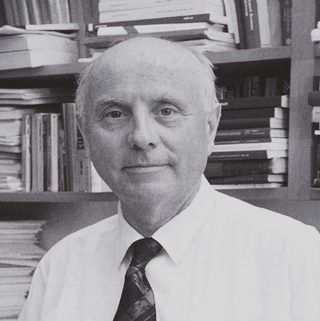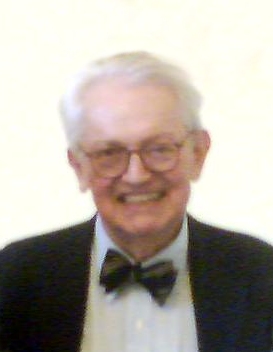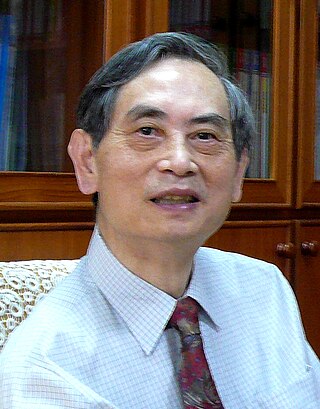Peter Pershan earned his B.S. at Polytechnic Institute of Brooklyn in 1956 and his Ph.D. in physics at Harvard University in 1960 for nuclear magnetic resonance under the supervision of Nicolaas Bloembergen. After a short postdoctoral appointment with Bloembergen he was appointed an assistant professor at Harvard University, where he was the Frank B. Baird, Jr. Professor of Science, at both Physics Department and Division of Engineering and Applied Sciences. He retired becoming emeritus in 2015.
Pershan began his career in nuclear magnetic resonance; however, before moving on to other things, he and Bloembergen produced some of the first papers on non-linear optics, a field for which Bloembergen later received Nobel Prize in Physics in 1981.
He remained active in this field until the early 1980s when he wrote a book on liquid crystals and moved into the then-new field of synchrotron radiation.
Along with Jens Als-Nielsen, Pershan developed the first synchrotron X-ray reflectometer for the study of the horizontal free surface of a liquid, and carried out the first synchrotron measurements on liquid surfaces at HASYLAB, DESY in 1982. The liquid surface spectrometers now at Advanced Photon Source and the National Synchrotron Light Source are all variations of the HASYLAB instrument.
Since 1982 Pershan has led the field in exploration of such diverse liquid surfaces as superfluid helium, water, and liquid metals. Aside from sabbaticals at the University of Paris, Brookhaven National Laboratory, and Risø National Laboratory Pershan has been at Harvard University (where he has been a faculty member since 1961) since he arrived as a graduate student in September 1956.
In addition to over 240 scientific articles Peter Pershan has published three books:

Condensed matter physics is the field of physics that deals with the macroscopic and microscopic physical properties of matter, especially the solid and liquid phases, that arise from electromagnetic forces between atoms and electrons. More generally, the subject deals with condensed phases of matter: systems of many constituents with strong interactions among them. More exotic condensed phases include the superconducting phase exhibited by certain materials at extremely low cryogenic temperatures, the ferromagnetic and antiferromagnetic phases of spins on crystal lattices of atoms, the Bose–Einstein condensates found in ultracold atomic systems, and liquid crystals. Condensed matter physicists seek to understand the behavior of these phases by experiments to measure various material properties, and by applying the physical laws of quantum mechanics, electromagnetism, statistical mechanics, and other physics theories to develop mathematical models and predict the properties of extremely large groups of atoms.

Isidor Isaac Rabi was an American physicist who won the Nobel Prize in Physics in 1944 for his discovery of nuclear magnetic resonance, which is used in magnetic resonance imaging (MRI). He was also one of the first scientists in the United States to work on the cavity magnetron, which is used in microwave radar and microwave ovens.

A synchrotron light source is a source of electromagnetic radiation (EM) usually produced by a storage ring, for scientific and technical purposes. First observed in synchrotrons, synchrotron light is now produced by storage rings and other specialized particle accelerators, typically accelerating electrons. Once the high-energy electron beam has been generated, it is directed into auxiliary components such as bending magnets and insertion devices in storage rings and free electron lasers. These supply the strong magnetic fields perpendicular to the beam that are needed to stimulate the high energy electrons to emit photons.

Nicolaas Bloembergen was a Dutch-American physicist and Nobel laureate, recognized for his work in developing driving principles behind nonlinear optics for laser spectroscopy. During his career, he was a professor at Harvard University and later at the University of Arizona and at Leiden University in 1973.
George Ernest Kalmus, CBE, FRS is a noted British particle physicist.

Robert Blinc was a prominent Slovene physicist a full professor of physics and, with more than 650 articles in prestigious international journals and two extensive monographs published abroad, a highly regarded and quoted researcher in condensed matter physics.
Joachim Stöhr is a physicist and professor emeritus of the Photon Science Department of Stanford University. His research has focused on the development of X-ray and synchrotron radiation techniques and their applications in different scientific fields with emphasis on surface science and magnetism. During his career he also held several scientific leadership positions, such as the director of the Stanford Synchrotron Radiation Laboratory (SSRL) and he was the founding director of the Linac Coherent Light Source (LCLS), the world's first x-ray free electron laser.
Herbert Sander Gutowsky was an American chemist who was a professor of chemistry at the University of Illinois Urbana-Champaign. Gutowsky was the first to apply nuclear magnetic resonance (NMR) methods to the field of chemistry. He used nuclear magnetic resonance spectroscopy to determine the structure of molecules. His pioneering work developed experimental control of NMR as a scientific instrument, connected experimental observations with theoretical models, and made NMR one of the most effective analytical tools for analysis of molecular structure and dynamics in liquids, solids, and gases, used in chemical and medical research, His work was relevant to the solving of problems in chemistry, biochemistry, and materials science, and has influenced many of the subfields of more recent NMR spectroscopy.

A particle accelerator is a machine that uses electromagnetic fields to propel charged particles to very high speeds and energies to contain them in well-defined beams. Small accelerators are used for fundamental research in particle physics. Accelerators are also used as synchrotron light sources for the study of condensed matter physics. Smaller particle accelerators are used in a wide variety of applications, including particle therapy for oncological purposes, radioisotope production for medical diagnostics, ion implanters for the manufacture of semiconductors, and accelerator mass spectrometers for measurements of rare isotopes such as radiocarbon.

Charles Pence Slichter was an American physicist, best known for his work on nuclear magnetic resonance and superconductivity.

The Institute of Physics (IOP) of the National Academy of Sciences of Ukraine founded in 1926 is the oldest research institution of physical science within the academy. Being on the path of both infrastructure development and research diversification for more than 80 years, the institute has eventually originated five more specialized research institutions.
David Hardy Whiffen FRS was an English physicist and pioneer of infrared and Electron Spin Resonance known for the "Whiffen Effect".

Sow-Hsin Chen, was a Hoklo Taiwanese physicist and Professor Emeritus at Massachusetts Institute of Technology (MIT). He was a recognized pioneer in the research of the dynamic properties of supercooled and interfacial water with the use of neutron scattering techniques. As an educator, he was recognized for his training of young scientists in the use of those same techniques. Regarding hydrogen storage, his research focused on the use of activated carbon to allow hydrogen to be stored at room temperature.
The index of physics articles is split into multiple pages due to its size.
The index of physics articles is split into multiple pages due to its size.
Cornelis Jacobus (Cor) Gorter was a Dutch experimental and theoretical physicist. Among other work, he discovered paramagnetic relaxation and was a pioneer in low temperature physics.
Myer Bloom, was a Canadian physicist, specializing in the theory and applications of Nuclear magnetic resonance.
Chunni Lal Khetrapal was an Indian chemical physicist and a vice chancellor of the Allahabad University. He was known for his studies in chemical physics, particularly in the field of Nuclear magnetic resonance spectroscopy. He was an elected fellow of the Indian National Science Academy and the National Academy of Sciences, India. The Council of Scientific and Industrial Research, the apex agency of the Government of India for scientific research, awarded him the Shanti Swarup Bhatnagar Prize for Science and Technology, one of the highest Indian science awards, in 1982, for his contributions to chemical sciences.
Maurice Goldman is a French physicist and member of the French Academy of Sciences, who is at the origin of developments in the theory of nuclear magnetic resonance.
Liquid-crystal physicists, such as Peter Pershan of Harvard University, are studying these systems, using birefringence as well as quasielastic and Brillouin-scattering techniques developed for liquid crystals.